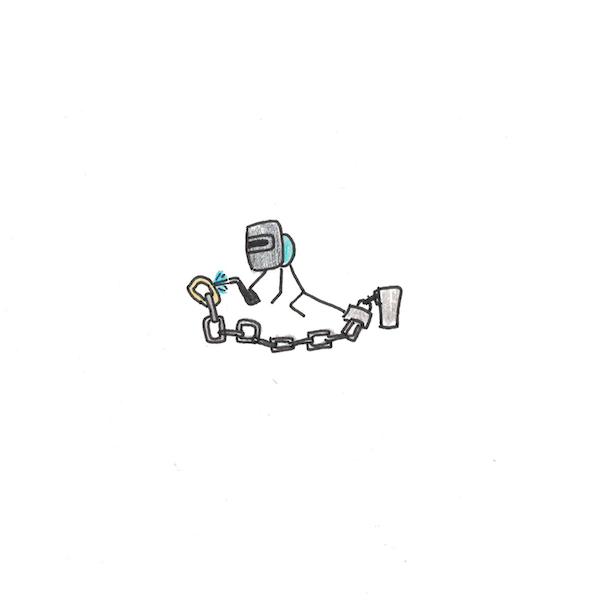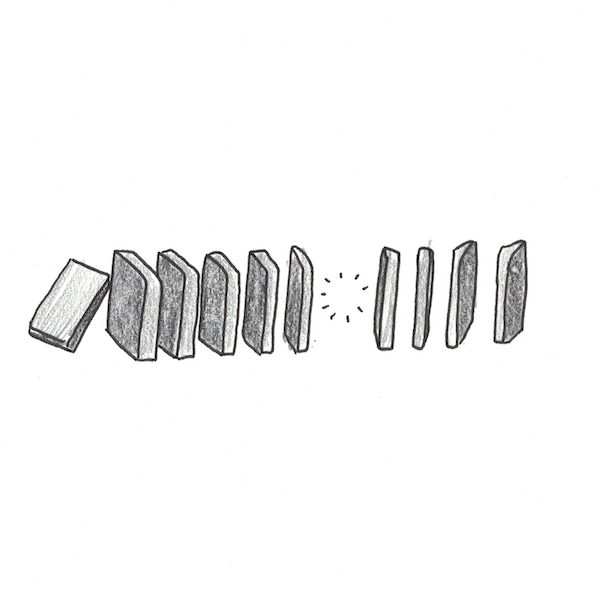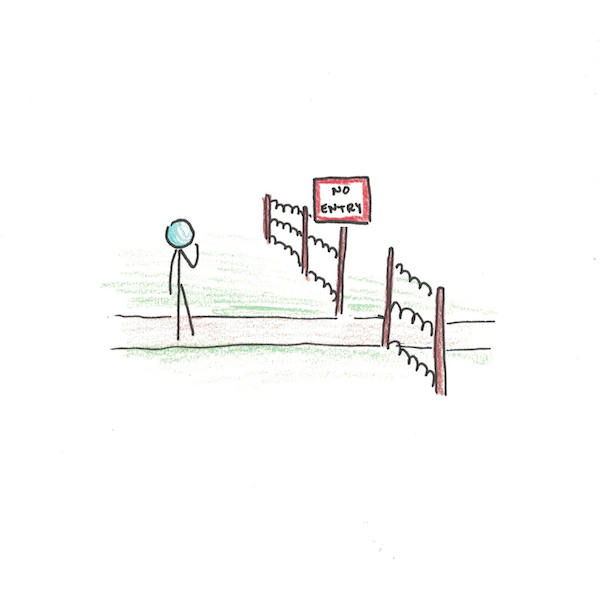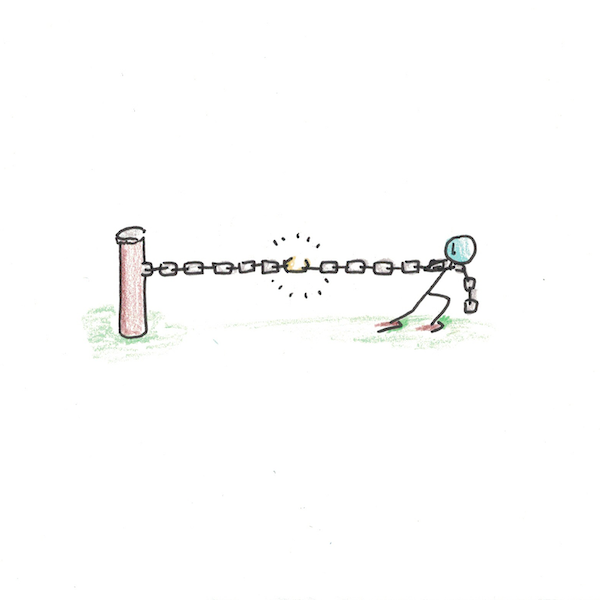My first set of articles I wrote that got my blog some attention were a series called Habitual Mastery. At the time I had spent a couple years extensively working on my habits through thirty-day trials. The series was an attempt to condense my observations into usable advice.
For someone who has never put serious effort into building new habits, the concept can be life-changing. A lot of writers who talk about self-improvement start with habits. A reason for this seems to be that once you get into the habit of making habits, it can seem so transformational that you just have to start writing about it.
Thus, it’s fair to say I’m an advocate for habit-building as a tool.

Yet, I think it’s the very power of a tool like habit-building that can also create some overreach. Some of the things I thought I could do with enough conditioning or training failed to materialize. In other circumstances, habits are simply the wrong way of thinking for making progress on some goals.
In this article, I’d like to explore what I see as some of the limitations to an otherwise beneficial practice.
Limits to Habits
1. Habits Aren’t Routines
One limit is pretty straightforward: not all behaviors can be easily automated.
As Nir Eyal argues here, a lot of what we refer to as habits are simply routines. Cognitively effortful activities that require effort and attention. Thus there isn’t, strictly speaking, a habit for studying a difficult topic or putting in a hard workout at the gym. Nobody ever becomes absent-minded and snaps out of it to realize they’re midway through a benchpress.

Habits, in this stricter sense, are those behaviors that flow automatically and unconsciously from a set of prompts. Routines are behaviors we do repeatedly, but involve many deliberate actions that can’t be done without some effort and thinking.
This suggests putting some caution on one’s goals for habits. If the idea is that a behavior can proceed with zero effort after sufficient habituation, you may be disappointed. Routines can become easier with time, but they rarely have zero effort required.
2. Habits are Often Fragile
This leads into a second limitation of habits: they are rarely permanent.
Since many habits are actually routines—mixtures of automated and deliberate action—there are few we care about that don’t involve some ongoing effort to sustain.

I’ve written before about why I think habits are often meta-stable. They can require little effort to sustain provided everything else in your life is static. Since that assumption rarely holds, there is always some effort required to reassert the routine you want.
Exercise is a clear example. If you go to the gym every day, without fail, for an entire year, it’s safe to say that it will feel quite automatic when you’re done. No small part of that is simply the commitment you’ve made makes the exercising routine highly salient. Thus it might feel fairly easy to continue.
Except you switch jobs, move houses or get injured and your schedule changes. You miss a few days, maybe even a few weeks. Certainly rebuilding is easier than exercising for the first time, but there is a non-trivial effort involved.
Where this is particularly relevant is when there are multiple habits you want to sustain. Maintaining one or two good habits is fine. But if you need to maintain dozens, all which have non-zero time commitments? You may have a situation that’s untenable long-term.
3. Habits Aren’t Commitments
I’ve already spoken about the difference between habits and routines. The latter require active effort and can’t be fully automated. The most you can hope for is to automate some of the aspects of setting up or getting started, that make it a little smoother.
Commitments are another thing that seem similar to habits but are quite different. A commitment is a rule you’ve put in place for yourself. That rule might be something like, “I must exercise at least 5 times per week,” or, “I don’t eat desserts on weekdays.”

Once again, like routines, there are elements of this that get easier with repeated application. Saying no to chocolate cake during an office birthday party feels weird the first time, but fine after doing it for months.
But what’s characteristic of a habit is that a behavior flows automatically from a triggering situation. This is not the case with self-enforced rules. Otherwise the rule wouldn’t even need to be explicit, it would just be something you do without thinking about it.
Similarly, many commitments can result in a backsliding effect if they’re violated. If eating healthy were a habit, you’d expect someone who diets to slowly transition to eating less healthy in the event of a slip. Instead, it’s common to see major backsliding—temporarily eating much worse than even before the diet began. In this case it was the self-conscious force of a rule “I should do X” that was inhibiting overeating, not an unconscious and automatic habit.
Done repeatedly, elements of a commitment can become a habit—the person who never eats meat doesn’t think about eating it at a barbecue. But, like routines, commitments may require an ongoing investment of effort to sustain. If violations result in backsliding, it probably means that the force sustaining the behavior wasn’t a habit.
4. Habits are Often Too Slow
The habit-forming philosophy—that you ought to do things slowly and steadily, since positive, automatic behaviors will compound over time—has major benefits. But there are many areas where such a strategy doesn’t apply.
The person starting a business may only have a few months to reach profitability or they’ll run out of capital. Starting a new job, going back to school, taking on a difficult project all often involve similar large upfront investments of effort that can’t be smoothed down.

The problem isn’t that habits aren’t relevant in intense projects—clearly they are. The problem is that if you take the prescription of slow and steady seriously, you often end up choosing a wildly different strategy than if you were thinking about expending an obsessive level of effort. What matters isn’t whether slow and steady, in general, is better than fast and obsessive, but the effectiveness of the specific strategy you chose.
In some cases, slow and steady leads to a more sustainable strategy that works well in the long-run. Writing a blog, for instance, is something that can take years to build an audience—even if you’re really good. Thus slow-and-steady may be better than the assumption that you should know whether or not you’ll be successful after a month.
In contrast, I find language learning to be a case where slow-and-steady is often disastrous (in the beginning). The reason is that it tends to push people to passive learning techniques that are really ineffective—playing on your phone instead of actually communicating. Later on, once you’ve reached some foothold in the language, slow-and-steady starts to be a lot more effective.
The point here isn’t to make some general prescription about whether you ought to go fast or slow. Rather it’s to say that when picking an approach, the foremost decision is to do what works. Sometimes that’s amenable to a process of slowly accumulating long-term habits. Other times, a more serious, obsessive effort will be needed. (And, sometimes you need both.)
The mistake is in assuming that slow or fast always works best, and then using that to dictate the strategy you pick regardless of whether that specific strategy is particularly effective.
5. Human Nature Has Limits
Habits are an important tool, but they’re just a tool. Like a hammer or a saw, they work really well for some things (banging nails, cutting wood) and really bad for other things (painting a picture, petting a kitten).
In my early days of setting habits, I imagined human nature was almost infinitely plastic. Thus I worked on a lot of new projects that assumed I could change my behavior in any way I wanted, and with only enough time, the new behavior would be just like my old habits.
I’ve already talked about why this isn’t true in the case of routines and commitments (for which the majority of useful behaviors we want to cultivate are). But, the limitations there are mostly a matter of degree. No, you generally can’t expect an effortful behavior to become effortless—but even making it somewhat easier helps a lot.
In contrast, other habits I think are particularly difficult to sustain because they run counter to our basic physiological and psychological needs. A habit that requires you to sleep only four hours isn’t just a matter of conditioning—at some point exhaustion will set in. Extreme diets, exercise plans or even working rhythms can all be unsustainable too. Conditioning can’t overcome physiological deprivation.
The same is true, but in a more subtle way, for our psychological needs. Human beings have deeply hardwired needs for autonomy, competence and relatedness. Any habit that consistently negates one of these needs won’t last.

Where Do Habits Work Well?
Given all this negativity, I think I better clarify my initial point: habits are good and habit-forming methods are quite useful.
In particular, a focus on habits is useful when:
- The most effective approaches depend more on patiently persisting over long periods of time, rather than overcoming brief, but intense, obstacles.
- The behavior you want can eventually run in the background of your life, not requiring lots of deliberate thinking and effort.
- You’re looking to make long-term changes to your routine or lifestyle, rather than a temporary shift for particular circumstances.
Understanding the limitations of habits is part of what makes them powerful. If you go in with the right expectations, you’ll be far more likely to make them stick.


 I'm a Wall Street Journal bestselling author, podcast host, computer programmer and an avid reader. Since 2006, I've published weekly essays on this website to help people like you learn and think better. My work has been featured in The New York Times, BBC, TEDx, Pocket, Business Insider and more. I don't promise I have all the answers, just a place to start.
I'm a Wall Street Journal bestselling author, podcast host, computer programmer and an avid reader. Since 2006, I've published weekly essays on this website to help people like you learn and think better. My work has been featured in The New York Times, BBC, TEDx, Pocket, Business Insider and more. I don't promise I have all the answers, just a place to start.